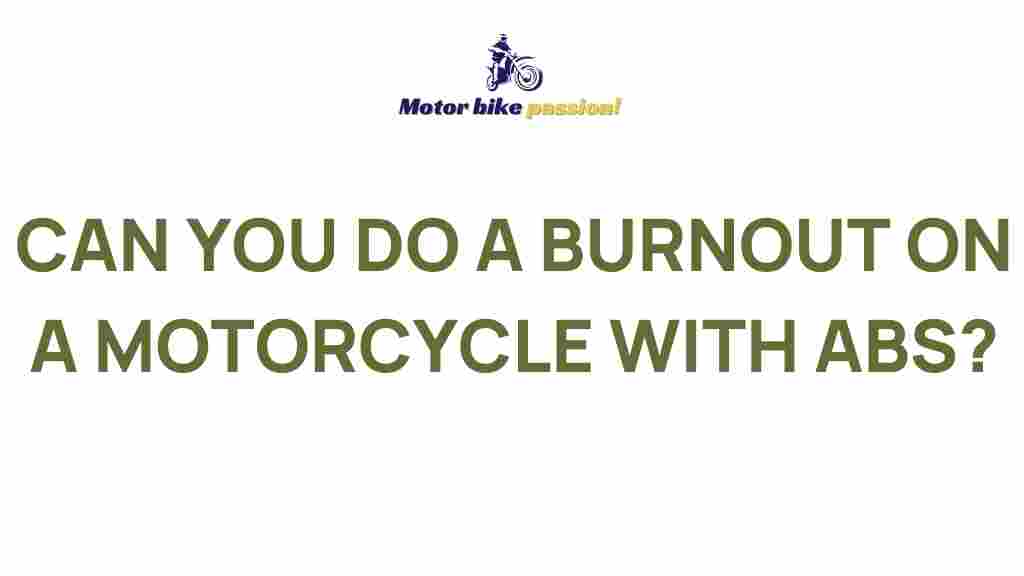Master the art of **motorcycle burnouts** with ABS and experience the rush of adrenaline while ensuring safety and control. Dive into this detailed guide for beginners and enthusiasts.
How to Perform a Motorcycle Burnout with ABS
A motorcycle burnout is an exhilarating skill, combining power and precision. With the inclusion of ABS (Anti-lock Braking System), executing a burnout becomes safer and more manageable. This guide will help you unleash your inner thrill-seeker while keeping safety in mind.
What is a Motorcycle Burnout?
A burnout occurs when the rear tire spins rapidly while the front tire remains stationary, creating dramatic smoke and friction. It’s not only a crowd-pleaser but also a rite of passage for many **motorcycle** enthusiasts.
Why ABS Enhances Motorcycle Burnouts
ABS is designed to prevent wheels from locking during braking. For burnouts, it provides stability and prevents the front tire from slipping, making the process safer and more controlled for **motorcycle** riders.
Essential Preparation for Motorcycle Burnouts
Before you begin, ensure the following:
- Safety gear: Always wear a helmet, gloves, and protective clothing.
- Clear space: Choose an open, non-slip area free from obstacles.
- Inspect your motorcycle: Check tire condition, brakes, and ABS functionality.
For a deeper understanding of ABS systems, visit this detailed resource.
Step-by-Step Guide to Performing a Motorcycle Burnout with ABS
Follow these steps to execute a controlled burnout:
- Start your motorcycle: Position your bike on a stable surface and switch it on.
- Hold the front brake: Firmly grip the front brake lever to engage the ABS system.
- Shift into first gear: Press the clutch and shift into first gear, ensuring a smooth transition.
- Rev the engine: Gradually increase the throttle while keeping the clutch engaged.
- Release the clutch partially: Let the clutch out slowly to transfer power to the rear wheel.
- Maintain control: Keep the front brake steady to allow the rear wheel to spin while the front remains stationary.
Pro tip: Balance throttle and brake pressure carefully to avoid losing control of the **motorcycle**.
Troubleshooting Common Issues
Encountering problems during your burnout attempt? Here are some solutions:
- The rear wheel won’t spin: Check if you’re applying too much front brake or too little throttle.
- The motorcycle moves forward: Ensure you’re gripping the front brake firmly and balancing clutch release.
- ABS interference: Some motorcycles allow ABS deactivation; consult your bike’s manual.
Safety First: Avoiding Burnout Pitfalls
Burnouts can be risky without proper precautions. Always prioritize safety by:
- Wearing full protective gear.
- Practicing in controlled environments.
- Ensuring your motorcycle is in good condition.
For more tips on motorcycle safety and riding techniques, explore our dedicated resources.
Why Master Motorcycle Burnouts?
Beyond the thrill, burnouts can improve throttle control and enhance your **motorcycle** riding skills. With ABS, you gain a new layer of confidence, making the experience both fun and secure.
Final Words
Mastering a motorcycle burnout with ABS is a blend of skill and excitement. With this guide, you’re equipped to perform safely and effectively, making every ride unforgettable.
This article is in the category Safe Driving and created by MotorBikePassion Team
